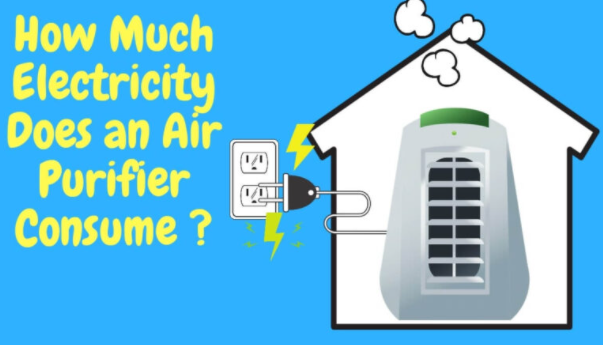Though air purifier has become an essential necessity, can we use it all the time? What energy source does an air purifier used? Would it waste a lot of energy? These are the questions that pop up in our minds so, here in this blog, we have assembled the answers to such questions and such relevant queries. Let’s get started.
How much electricity does an air purifier use?

An air purifier can work straight for a long time 24/7 that gives an impression of consuming a lot of electricity. All air purifiers employ a fan that blows, with some being more powerful than others with the presence of a HEPA filter in most units requiring the fan to blow at high speed, costing considerably more energy.
The advantage of having the air purifier is that it does not require a lot of energy, as the maximum wattage that it consumes ranges between 40W to 200W. However, your have can run them easily at a low Watt such as 10-30W setting as well.
Do air purifiers have batteries?

Some air purifiers such as portable ones (the small size) and some specific kinds used batteries (Lithium-ion). The type of air purifiers such as Ion Generators to release negative ions, a filter mechanism for fan setup and suction, and an Ozone Generator for releasing oxygen in the air is battery-operated air purifiers.
Do a HEPA air purifier uses a lot of energy?

To be honest, it is not specified that if the HEPA filter uses a lot of energy or not but, it totally depends upon the speed of the airflow. Most of the HEPA filers use 50-100W every hour. To be precise, using it 12 hours 24/7 will cost you around 3 to $5 monthly and 36-$60 annually.
Note: The mentioned prices could be fluctuated depending upon the price of electricity.
Factors that cause an air purifier power consumption

The powerful air purifier units with versatile features may sometimes become a reason for more power consumption. Here are some factors that are most likely to be responsible for more power consumption.
Watt (the energy rating)
The energy rating of the unit is the sole contributor and decider of the quantity of power you will be paid in due time, coupled with your supplier’s rate of electric charge. Simply said, the larger the energy use in watts, the higher the expenses.
Types of Filters
Various filter types are used in air purifiers across the world, depending on what they are designed for and the manufacturer’s choice for that specific model. In general, machines that employ the HEPA filter require the fans to blow harder than a standard fan to push air through the tiny (smaller than ordinary filter) holes of the HEPA filter.
Fan Size
Typically, the larger the unit, the larger the fan that will be utilized and the greater the power necessary to power the fan. A large fan always requires more energy to function efficiently and might significantly increase your electricity costs.
Room coverage
You wouldn’t expect an air purifier built for use in small restricted places to consume the same amount of electricity as those meant for big open spaces, would you? Most certainly not. Air purifiers for large rooms are often constructed with powerful fans and perhaps a HEPA filter, which guarantees that more energy will be spent.
UV light
These lights are installed into a unit to further sterilize the air that travels through it, as well as the interior elements of the device. This twofold protection comes at a cost, in the form of increased power consumed per kilowatt-hour, depending on how long the UV light is utilized.
Running Speed
These lights are installed into a unit to further sterilize the air that travels through it, as well as the interior elements of the device. This twofold protection comes at a cost, in the form of increased power consumed per kilowatt-hour, depending on how long the UV light is utilized.
Poor Environment Condition
When air purifiers are utilized in extremely polluted environments, they always have to work more to achieve the minimal expectation of air cleaning rate, which means the fan runs faster. As a result, more energy is consumed. Units with auto mode, that is, the capacity to select the pace at which it runs based on the ambient conditions.
